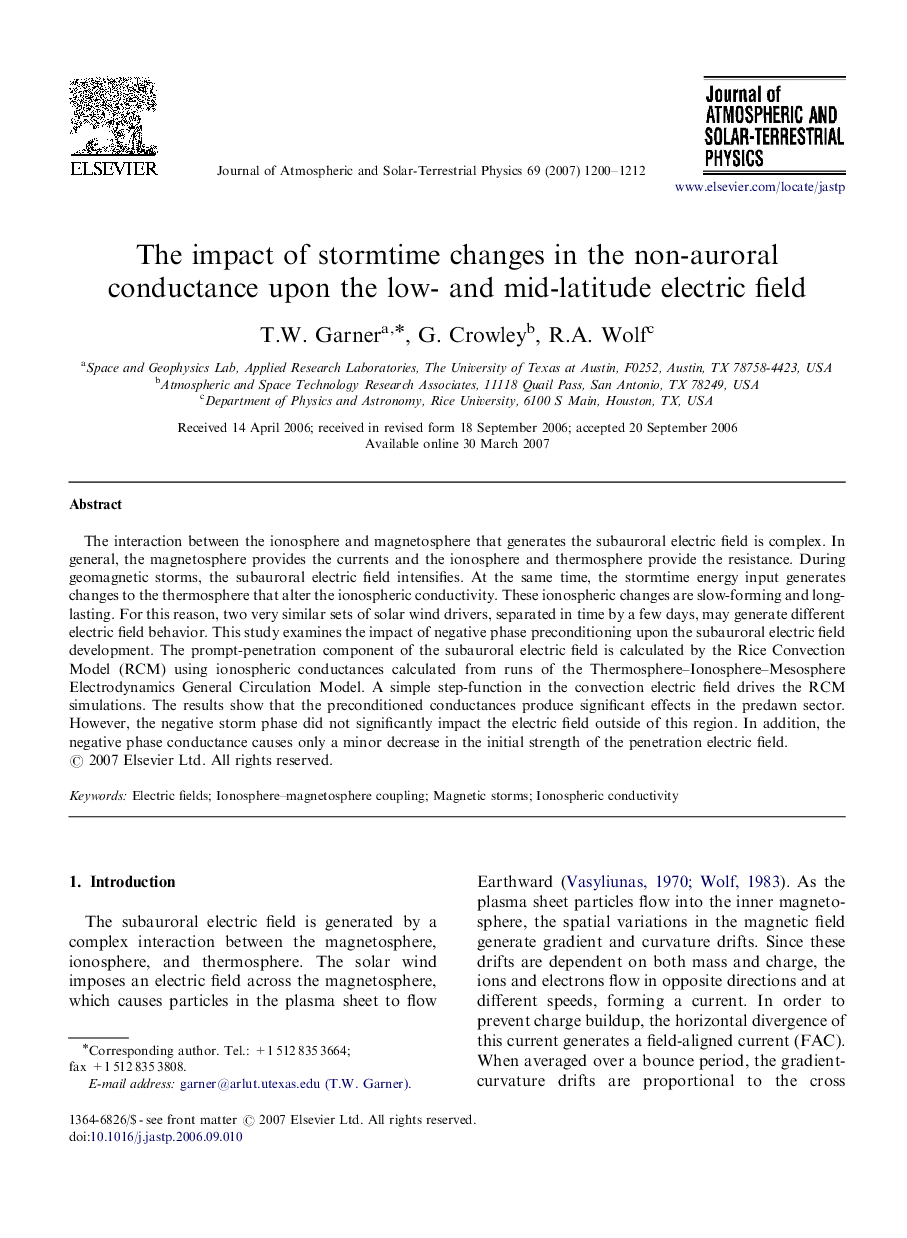| Article ID | Journal | Published Year | Pages | File Type |
|---|---|---|---|---|
| 1778130 | Journal of Atmospheric and Solar-Terrestrial Physics | 2007 | 13 Pages |
The interaction between the ionosphere and magnetosphere that generates the subauroral electric field is complex. In general, the magnetosphere provides the currents and the ionosphere and thermosphere provide the resistance. During geomagnetic storms, the subauroral electric field intensifies. At the same time, the stormtime energy input generates changes to the thermosphere that alter the ionospheric conductivity. These ionospheric changes are slow-forming and long-lasting. For this reason, two very similar sets of solar wind drivers, separated in time by a few days, may generate different electric field behavior. This study examines the impact of negative phase preconditioning upon the subauroral electric field development. The prompt-penetration component of the subauroral electric field is calculated by the Rice Convection Model (RCM) using ionospheric conductances calculated from runs of the Thermosphere–Ionosphere–Mesosphere Electrodynamics General Circulation Model. A simple step-function in the convection electric field drives the RCM simulations. The results show that the preconditioned conductances produce significant effects in the predawn sector. However, the negative storm phase did not significantly impact the electric field outside of this region. In addition, the negative phase conductance causes only a minor decrease in the initial strength of the penetration electric field.
